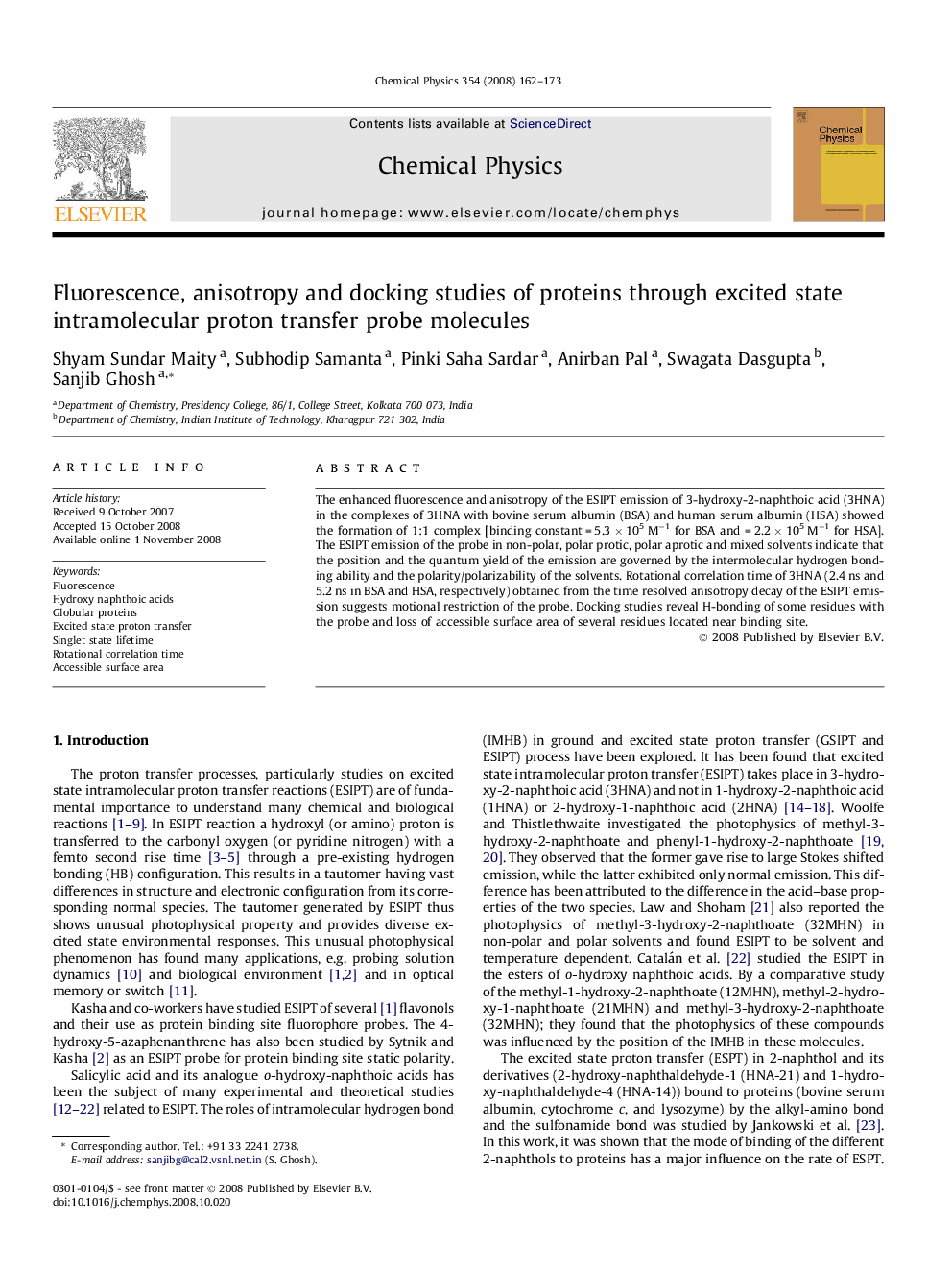| Article ID | Journal | Published Year | Pages | File Type |
|---|---|---|---|---|
| 5375797 | Chemical Physics | 2008 | 12 Pages |
Abstract
The enhanced fluorescence and anisotropy of the ESIPT emission of 3-hydroxy-2-naphthoic acid (3HNA) in the complexes of 3HNA with bovine serum albumin (BSA) and human serum albumin (HSA) showed the formation of 1:1 complex [binding constant = 5.3 Ã 105 Mâ1 for BSA and = 2.2 Ã 105 Mâ1 for HSA]. The ESIPT emission of the probe in non-polar, polar protic, polar aprotic and mixed solvents indicate that the position and the quantum yield of the emission are governed by the intermolecular hydrogen bonding ability and the polarity/polarizability of the solvents. Rotational correlation time of 3HNA (2.4 ns and 5.2 ns in BSA and HSA, respectively) obtained from the time resolved anisotropy decay of the ESIPT emission suggests motional restriction of the probe. Docking studies reveal H-bonding of some residues with the probe and loss of accessible surface area of several residues located near binding site.
Keywords
Related Topics
Physical Sciences and Engineering
Chemistry
Physical and Theoretical Chemistry
Authors
Shyam Sundar Maity, Subhodip Samanta, Pinki Saha Sardar, Anirban Pal, Swagata Dasgupta, Sanjib Ghosh,
